A George III Giltwood Mirror in the Manner of Thomas Johnson
circa 1760
Sold
Request Information
Follow Us
A George III Giltwood Mirror in the Manner of Thomas Johnson
An early George III carved giltwood mirror in the manner of Thomas Johnson, circa 1760.
The period mercury mirror plate within a moulded fluted frame is flanked by cascading native flora. The carved upper C-scroll corners are pierced and surmounted by a further scroll which seamlessly flows into the pediment of C-scrolls and flora centred by a rose. Similarly, the lower of the mirror is edged with large scrolls of dripping acanthus leaves and C-scrolls all flowing to central cartouche.
It should be noted that this example is in the most wonderful condition and dates from one of the most celebrated periods in English furniture history ‘ The Chippendale Period’.
Additional reading and Literature: H. Hayward, Thomas Johnson and the English Rococo, London, 1964; Peter Ward-Jackson, English Furniture Designs of the Eighteenth Century, London, Victoria and Albert Museum, 1984.
Mirrors of a similar form can be found at Sizergh Castle, Cumbria, North, Blickling Hall, Norfolk and Nostell Priory, West Yorkshire.
Thomas Johnson (1714-1778) was a notable British carver, designer and gilder who was born in London. He fully embraced the capriciousness of the rococo style. He was a pupil of Matthias Lock who embodied the harmonious combination of naturalistic motifs and had a tendency towards asymmetry.
Thomas Johnson concentrated his efforts on designs of wall lights, girandoles and console tables which allowed him to play with form and motifs. His designs were more elaborate than his contemporaries, and they were intended to promote his inventiveness rather than for more practical purposes. He first published his designs in the publication of Twelve Girandoles in 1755. His target audiences were cabinetmakers and upholsterers rather than the end-user. This publication was followed by a series of 53 designs published between 1756-1757. Three years later he published A New Book of Ornaments from which only one plate survives though others are known from 19th-century reproductions. One year later the prolific designer produced, One Hundred and Fifty New Designs.
The flora is most likely to be the flowers, leaves and fruit of the fig tree. Figs were imported from France, Spain and Italy to England in the 18th century and were planted on the south walls of stately houses whose aristocratic owners appeared to be the only ones to appreciate them… the lower classes having little regard for figs and often derided them, as in the common saying ‘not worth a fig’. Interestingly, ‘Brunswick’, ‘Brown Turkey’ and ‘White Marseilles’ are still the most commonly grown figs in Britain.
Condition
Provenance
Private London collection
Literature
Dimensions
PREVIOUSLY SOLD

Large George III 18th Century Mahogany Wine Cooler Cellarette or Jardinière
Large George III 18th Century Mahogany Wine Cooler Cellarette or Jardinière SoldFollow UsLarge George III 18th Century Mahogany Wine Cooler Cellarette or Jardinière A fine and large mid-18th century George III oval mahogany cellarette or wine...
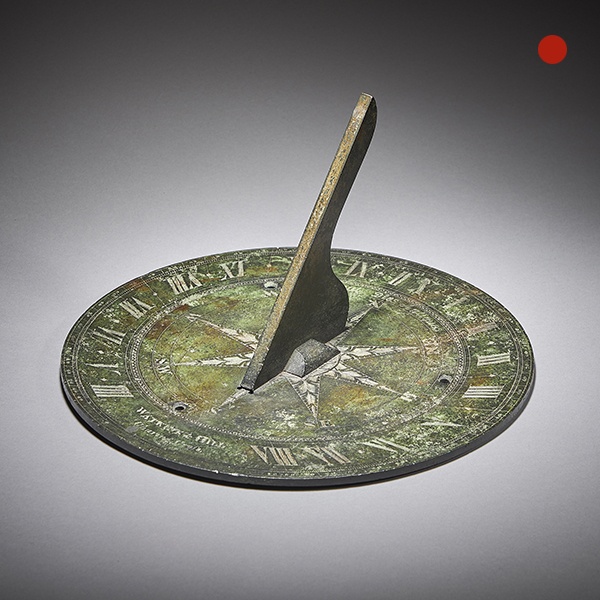
Rare 19th Century Bronze Horizontal Sundial by Watkins & Hill London
Rare 19th Century Bronze Horizontal Sundial by Watkins & Hill London £2,600 Follow UsRare 19th Century Bronze Horizontal Sundial by Watkins & Hill London A beautifully weathered circular bronze sundial by Watkins & Hill, first...
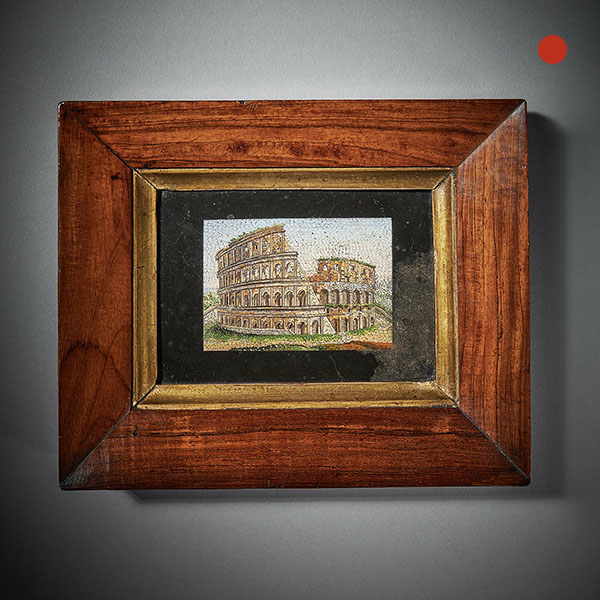
Early 19th Century Grand Tour Framed Pulvinated Micro Mosaic of the Colosseum
Early 19th Century Grand Tour Framed Pulvinated Micro Mosaic of the Colosseum SoldFollow UsEarly 19th Century Grand Tour Framed Pulvinated Micro Mosaic of the Colosseum A fine and rare early 19th century framed grand tour pulvinated micro...
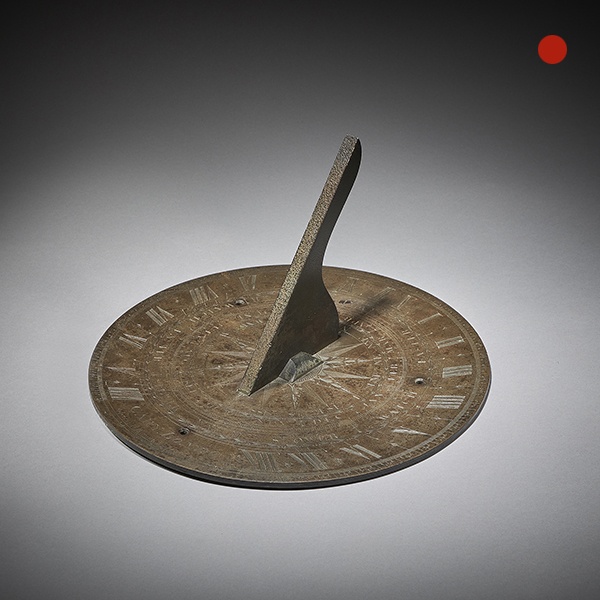
Early 19th Century English Bronze Horizontal Sundial by Cary of London
Early 19th Century English Bronze Horizontal Sundial by Cary of London £2,450 Follow UsEarly 19th Century English Bronze Horizontal Sundial by Cary of London An early 19th-century horizontal sundial by Cary London. This 12” diameter bronze...
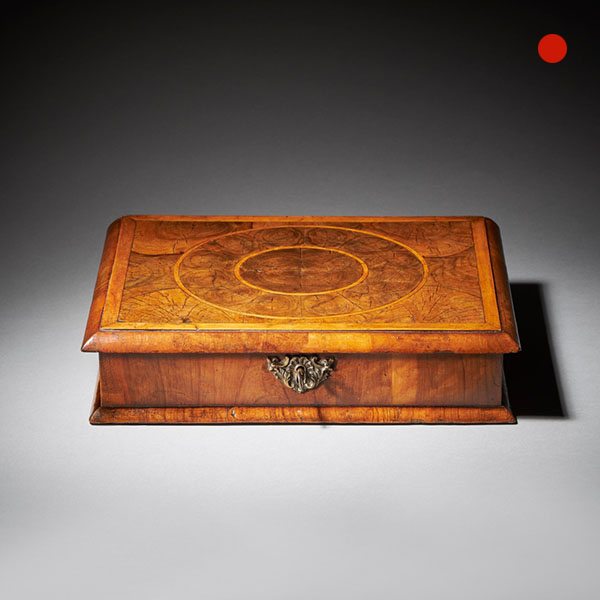
A Fine William and Mary 17th-Century Olive Oyster Lace Box
A Fine William and Mary 17th-Century Olive Oyster Lace Box Sold Follow UsA Fine William and Mary 17th-Century Olive Oyster Lace Box A Fine Late 17th Century Olive Oyster 'Lace Box' of Small Proportions. Circa 1680-1690 England. The...
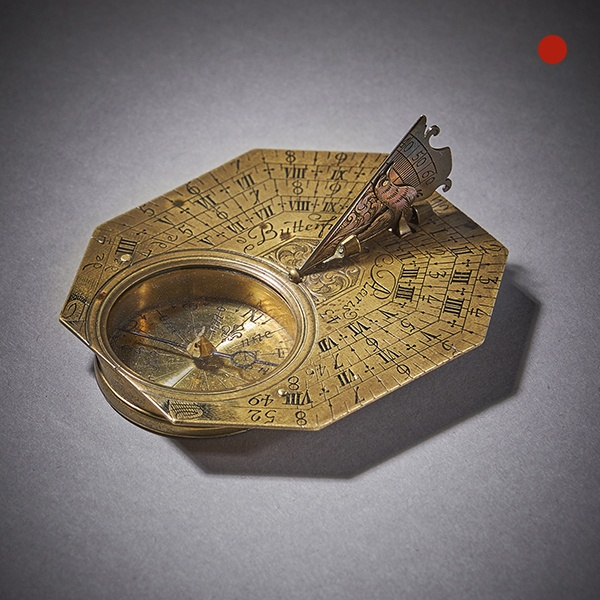
Fine Brass Pocket Sundial and Compass by Michael Butterfield Paris, circa 1700
Fine Brass Pocket Sundial and Compass by Michael Butterfield Paris Sold Follow UsFine Brass Pocket Sundial and Compass by Michael Butterfield Paris A fine brass Anglo-French octagonal pocket sundial with compass by Michael Butterfield, circa...

Large George III 18th Century Mahogany Wine Cooler Cellarette or Jardinière
Large George III 18th Century Mahogany Wine Cooler Cellarette or Jardinière SoldFollow UsLarge George III 18th Century Mahogany Wine Cooler Cellarette or Jardinière A fine and large mid-18th century George III oval mahogany cellarette or wine...

Rare 19th Century Bronze Horizontal Sundial by Watkins & Hill London
Rare 19th Century Bronze Horizontal Sundial by Watkins & Hill London £2,600 Follow UsRare 19th Century Bronze Horizontal Sundial by Watkins & Hill London A beautifully weathered circular bronze sundial by Watkins & Hill, first...

Early 19th Century Grand Tour Framed Pulvinated Micro Mosaic of the Colosseum
Early 19th Century Grand Tour Framed Pulvinated Micro Mosaic of the Colosseum SoldFollow UsEarly 19th Century Grand Tour Framed Pulvinated Micro Mosaic of the Colosseum A fine and rare early 19th century framed grand tour pulvinated micro...

Early 19th Century English Bronze Horizontal Sundial by Cary of London
Early 19th Century English Bronze Horizontal Sundial by Cary of London £2,450 Follow UsEarly 19th Century English Bronze Horizontal Sundial by Cary of London An early 19th-century horizontal sundial by Cary London. This 12” diameter bronze...

A Fine William and Mary 17th-Century Olive Oyster Lace Box
A Fine William and Mary 17th-Century Olive Oyster Lace Box Sold Follow UsA Fine William and Mary 17th-Century Olive Oyster Lace Box A Fine Late 17th Century Olive Oyster 'Lace Box' of Small Proportions. Circa 1680-1690 England. The...

Fine Brass Pocket Sundial and Compass by Michael Butterfield Paris, circa 1700
Fine Brass Pocket Sundial and Compass by Michael Butterfield Paris Sold Follow UsFine Brass Pocket Sundial and Compass by Michael Butterfield Paris A fine brass Anglo-French octagonal pocket sundial with compass by Michael Butterfield, circa...
YOU MAY ALSO LIKE
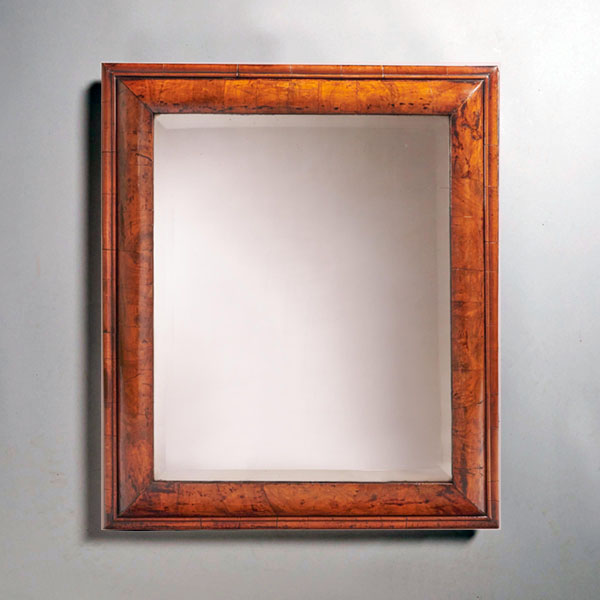
A Fine William and Mary 17th Century Figured Walnut Cushion Mirror C, 1690
A Fine William and Mary 17th Century Figured Walnut Cushion Mirror C, 1690 £6,500Follow UsA Fine William and Mary 17th Century Figured Walnut Cushion Mirror C, 1690 A large William and Mary 17th century figured walnut cushion mirror, circa...
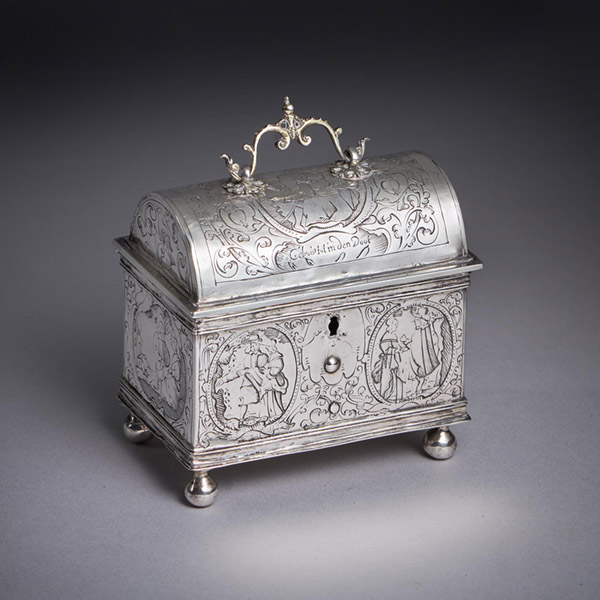
A museum-grade mid-17th century Dutch silver marriage casket or knottekistje, circa 1660
A museum-grade mid-17th century Dutch silver marriage casket or knottekistje, circa 1660 £9,500 [wpforms_selector form_id="11387" show_title="on" _builder_version="4.22.1" _module_preset="default" custom_margin="-30px||||false|false"...
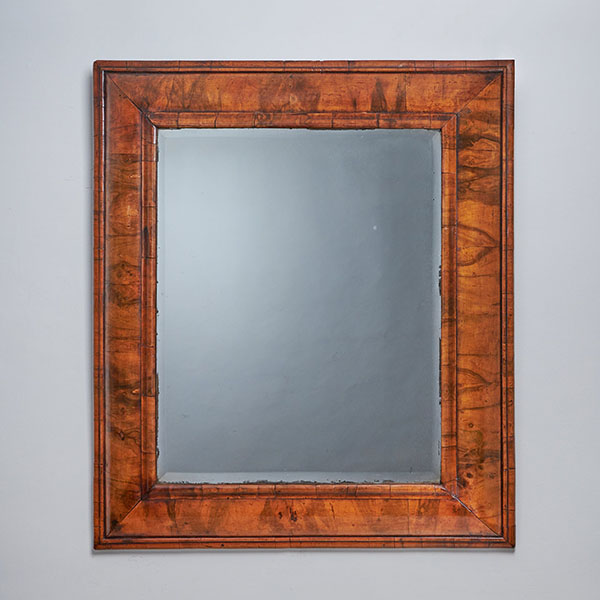
Large William and Mary 17th Century Figured Walnut Cushion Mirror c, 1690
Large William and Mary 17th Century Figured Walnut Cushion Mirror c, 1690 £7,495[wpforms_selector form_id="11387" show_title="on" _builder_version="4.22.1" _module_preset="default" custom_margin="-30px||||false|false" global_colors_info="{}"...
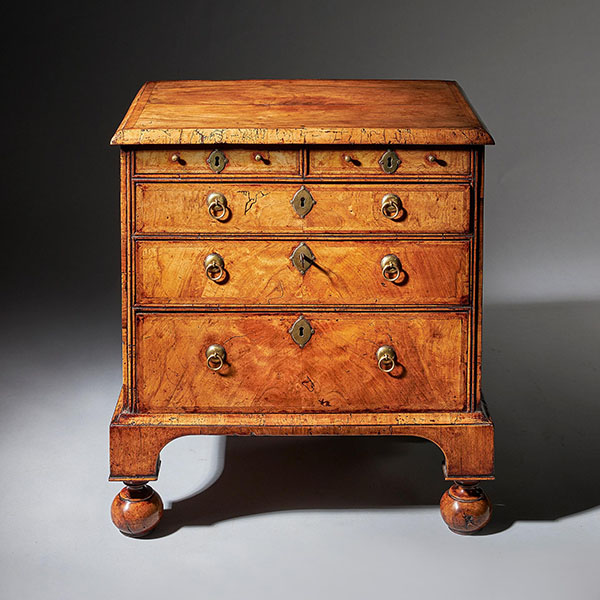
An extremely rare George I walnut chest of small proportions on ball and bracket
An extremely rare George I walnut chest of small proportions on ball and bracket £18,800[wpforms_selector form_id="11387" show_title="on" _builder_version="4.22.1" _module_preset="default" custom_margin="-30px||||false|false"...
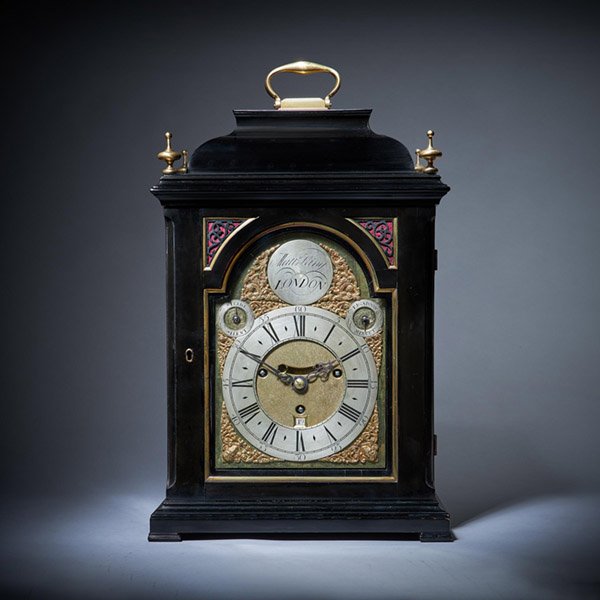
A Rare 18th Century George II Musical Table Clock by Matthew King, c. 1735.
A Rare 18th Century George II Musical Table Clock by Matthew King, c. 1735. £24,500[wpforms_selector form_id="11387" show_title="on" _builder_version="4.22.1" _module_preset="default" custom_margin="-30px||||false|false"...
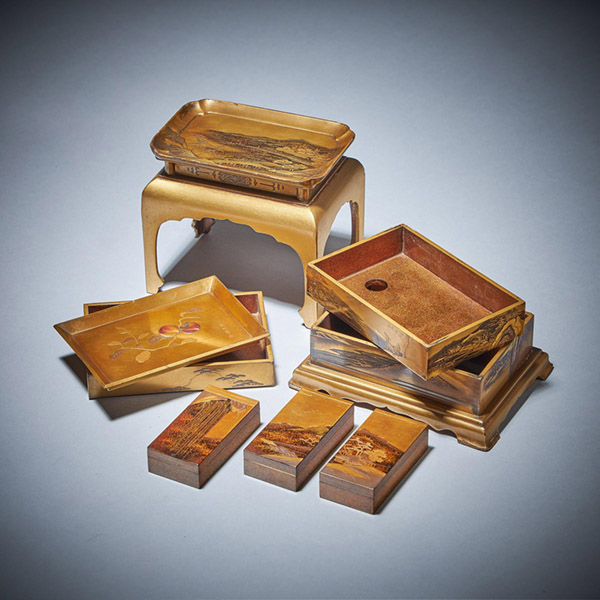
Signed Mid 19th C. Edo/Meiji Period Diminutive Lacquer Stacking Cabinet, Japan
Signed Mid 19th C. Edo/Meiji Period Diminutive Lacquer Stacking Cabinet, Japan £5,800[wpforms_selector form_id="11387" show_title="on" _builder_version="4.22.1" _module_preset="default" custom_margin="-30px||||false|false"...

A Fine William and Mary 17th Century Figured Walnut Cushion Mirror C, 1690
A Fine William and Mary 17th Century Figured Walnut Cushion Mirror C, 1690 £6,500Follow UsA Fine William and Mary 17th Century Figured Walnut Cushion Mirror C, 1690 A large William and Mary 17th century figured walnut cushion mirror, circa...

A museum-grade mid-17th century Dutch silver marriage casket or knottekistje, circa 1660
A museum-grade mid-17th century Dutch silver marriage casket or knottekistje, circa 1660 £9,500 [wpforms_selector form_id="11387" show_title="on" _builder_version="4.22.1" _module_preset="default" custom_margin="-30px||||false|false"...

Large William and Mary 17th Century Figured Walnut Cushion Mirror c, 1690
Large William and Mary 17th Century Figured Walnut Cushion Mirror c, 1690 £7,495[wpforms_selector form_id="11387" show_title="on" _builder_version="4.22.1" _module_preset="default" custom_margin="-30px||||false|false" global_colors_info="{}"...

An extremely rare George I walnut chest of small proportions on ball and bracket
An extremely rare George I walnut chest of small proportions on ball and bracket £18,800[wpforms_selector form_id="11387" show_title="on" _builder_version="4.22.1" _module_preset="default" custom_margin="-30px||||false|false"...

A Rare 18th Century George II Musical Table Clock by Matthew King, c. 1735.
A Rare 18th Century George II Musical Table Clock by Matthew King, c. 1735. £24,500[wpforms_selector form_id="11387" show_title="on" _builder_version="4.22.1" _module_preset="default" custom_margin="-30px||||false|false"...

Signed Mid 19th C. Edo/Meiji Period Diminutive Lacquer Stacking Cabinet, Japan
Signed Mid 19th C. Edo/Meiji Period Diminutive Lacquer Stacking Cabinet, Japan £5,800[wpforms_selector form_id="11387" show_title="on" _builder_version="4.22.1" _module_preset="default" custom_margin="-30px||||false|false"...






